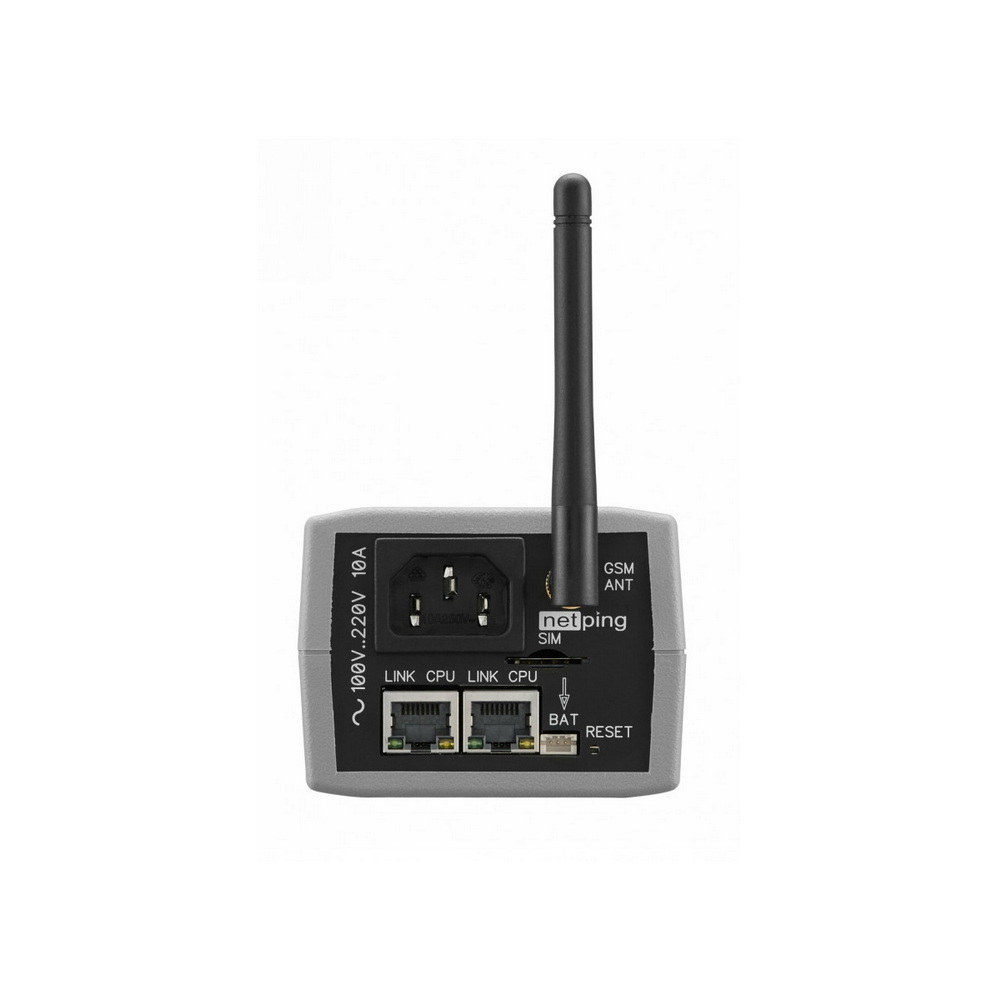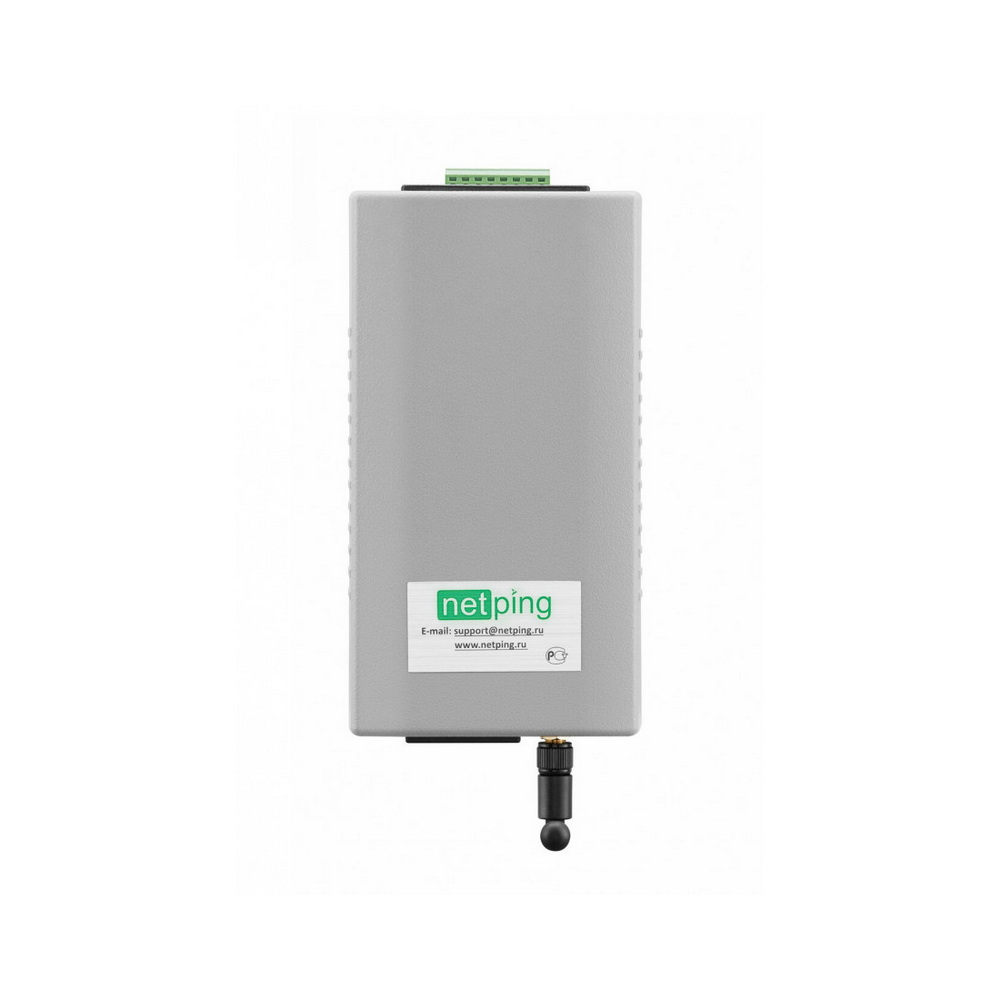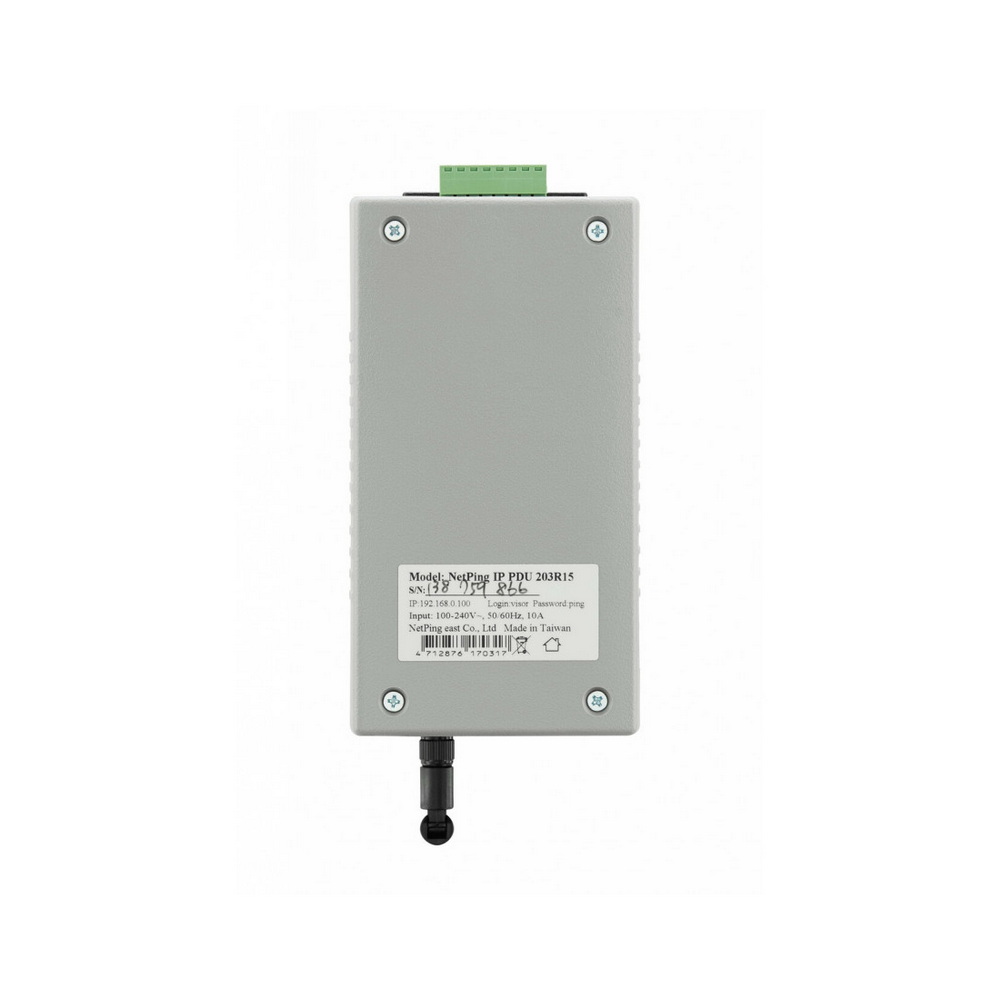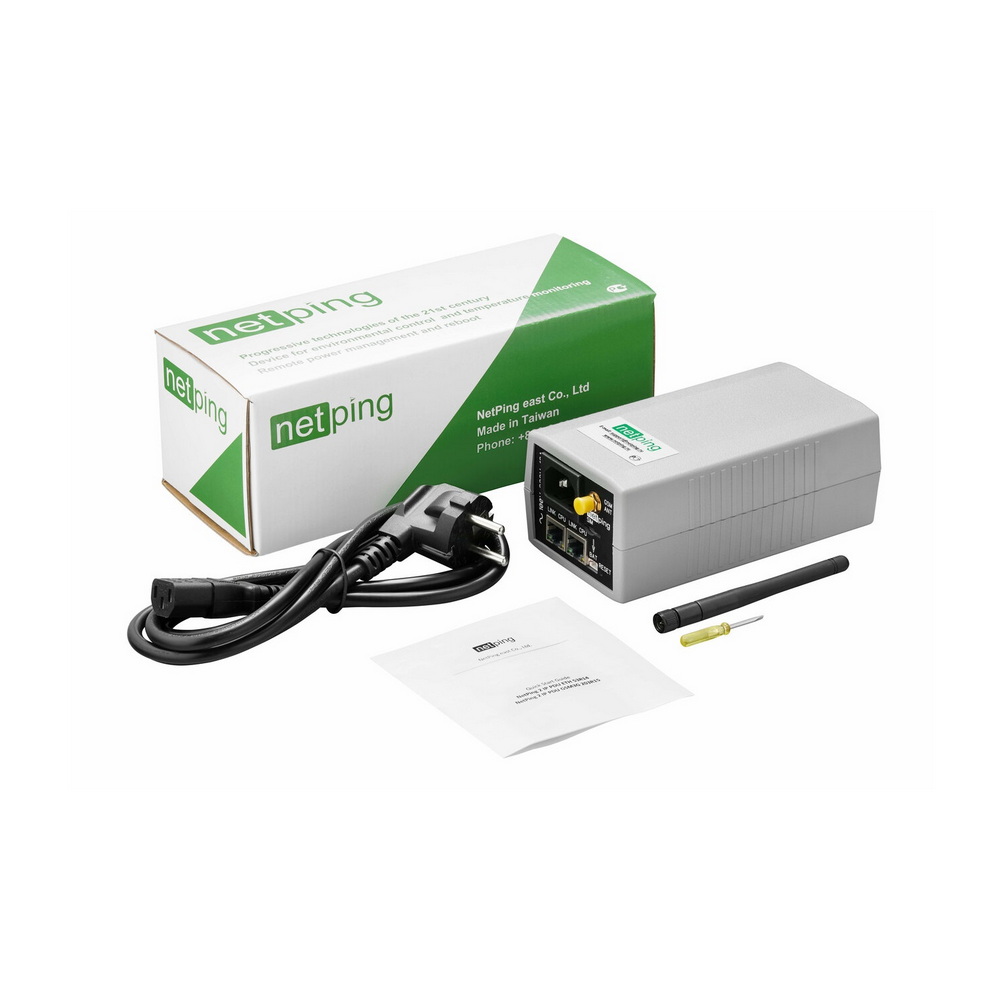Description
| Name | Status | Price, $ |
|---|---|---|
| NetPing 2 IP PDU GSM3G 203R15 |
End of life |
232 |
General usage conditions - for industrial and commercial usage in conditions of high humidity (0-95%, non-condensing). The device is not intended for domestic use. |
NetPing 2 IP PDU GSM3G 203R15 is related to the class of IP PDU (IP power distribution unit). These devices allow you to turn on, turn off and restart the equipment remotely (via the web interface, using SNMP commands or the HTTP API) by controlling the sockets 100 .. 250 V 50/60 Hz. The pecularities of this IP PDU are the connection of microclimate sensors and dry contact sensors, a built-in ionistor (supercapacitor) to send notifications from the sensors when the main power turns off, and a built-in 3G GSM modem for SMS notification and IP PDU control via SMS commands, and also an external battery connector for continuous operation of the IP PDU.


Applicable solutions:
- Remote power control inside ATMs, vending machines, payment terminals and other similar equipment. At the same time, the device can monitor the internal operating conditions of the equipment (for example, it can monitor the operating temperature of the bill acceptor and it will not fall outside the permissible range), signal problems both via Ethernet and using SMS commands. In case of interruption of the external power supply, the device will stay connected using SMS messages and continue to monitor the status of the sensors.
- Rebooting the frozen modems, access points, routers, servers and other computer equipment without the need for physical access. If the network is not available, the operation can be performed via SMS command. This allows you to save effort and costs on a lot of trips in order to turn on / off the frozen device.
- Remote turning on / off additional computer equipment. The physical turning on backup servers, routers, access points can be performed as necessary in manual or automatic modes and turning off when you do not need it. This saves energy and reduces wear and tear on equipment that is required only occasionally or at specific intervals.
- Remote turning on / off conference monitors, monitors in a gaming club or an Internet cafe. Monitors can be controlled both via Ethernet / Internet, and using SMS commands.
- Remote control of air conditioners, ventilation systems and climate control systems. Connected sensors allow you to monitor the current situation, and remote control of 220 V sockets allows you to turn on the system you need without physical presence at the facility, including in automatic mode. The device can control the air conditioner using IR commands!

Device Capabilities
Be notified
|
Use web interface from any device
|
Power up with remote control and automation
|
Enterprise-level reliability
|
Support & Warranty
|
Features Included
Remote management of device sockets via the Ethernet/Internet networkEach output socket of a NetPing device can be remotely switched on/switched off/reloaded. Sockets can be managed through a built-in web interface, with the help of any browser or using SNMP commands. |
Switching on/off sockets on a scheduleThe NetPing device can switch on and off a voltage on its built-in sockets on its own on a weekly schedule, switch on/off a voltage several times a day, use a special schedule for holidays. This may be useful for a daily/weekly forced reboot of external devices or for turning off unused equipment in a certain time of a day. |
A watchdog for automatic reloading of an external equipmentIf any external device, a router or an access point freezes sometimes, the NetPing PDU can automatically reload these devices. To do this, it constantly inquires indicated IP addresses by the ping protocol. If it gets no response, it will automatically reload a connected device by turning off and turning on its power supply. |
Remote control of sockets via SMS messagesAny socket on a NetPing device can be turned on/off or rebooted using an SMS message. This allows you to control power to a connected device even when the Ethernet/Internet network is down or unavailable. |







 Cable 4 extender, 4m
Cable 4 extender, 4m  FLWS-60BSL
FLWS-60BSL  Humidity sensor WS-2
Humidity sensor WS-2  NetPing AC/DIN
NetPing AC/DIN  NetPing Supply Voltage Sensor 995S2
NetPing Supply Voltage Sensor 995S2  PIR DETECTOR (mod.M105-1E)
PIR DETECTOR (mod.M105-1E)  Temperature sensor T811
Temperature sensor T811